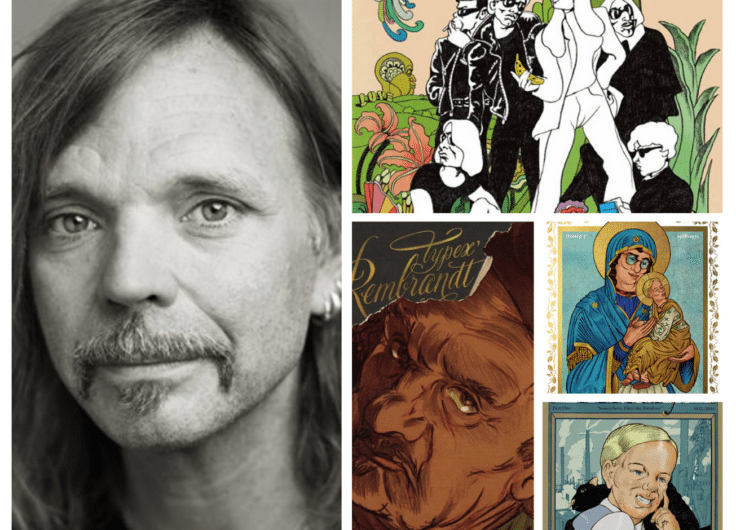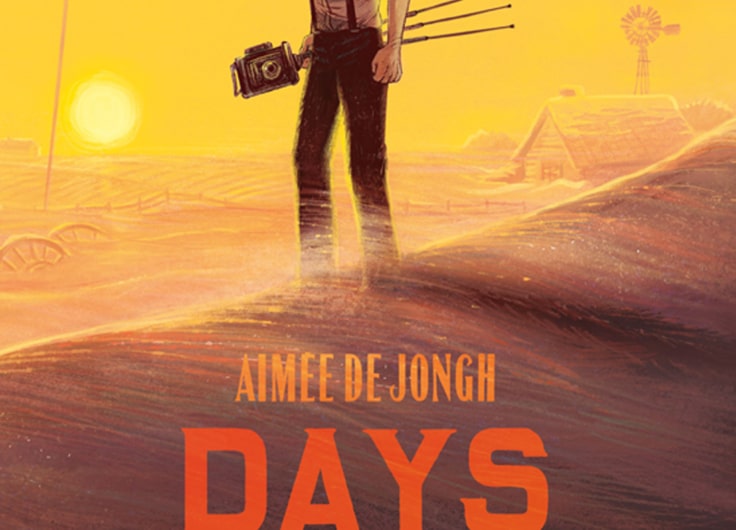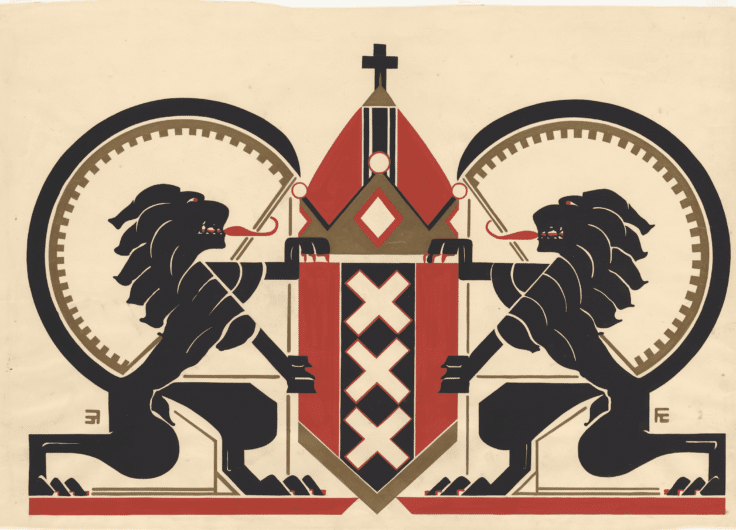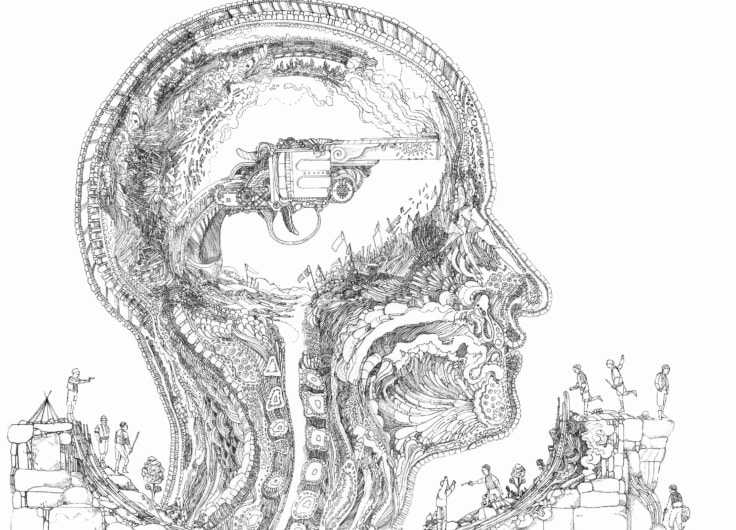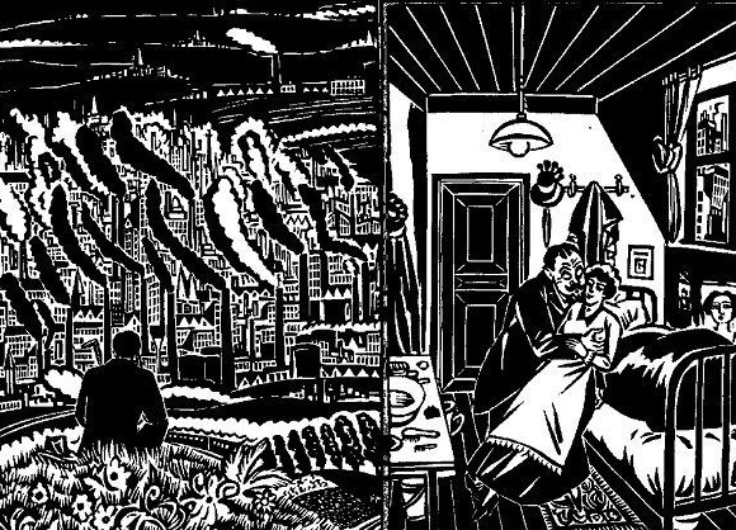How Comic Book Author Barbara Stok Made Her Own Way
Autobiographical comics are her trademark, but even in a book about the classical philosopher Hipparchia, Barbara Stok arrives at a theme that also resonates in her other work: the need for a conscious and simple life. An overview of a consistent oeuvre.
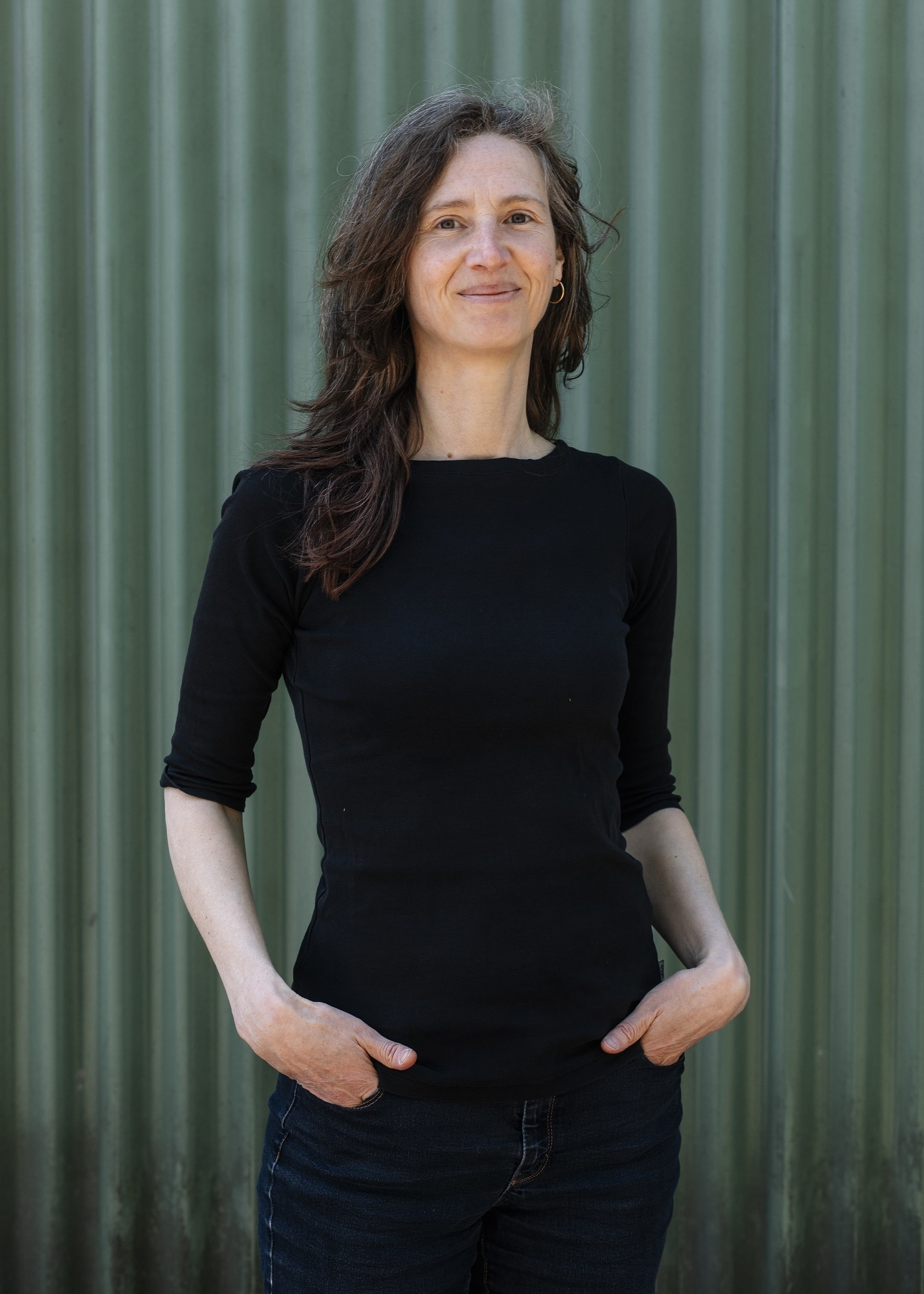 Barbara Stok
Barbara Stok© Lin Woldendorp
Judging from the first comics by Barbara Stok (b. 1970) from Groningen, it is not clear that she will ever make stories about philosophy again. Beginning in 1996 she started drawing comics in a way that fits perfectly with the youth culture of the time. She self-publishes Barbaraal, a comic based on the American model, a kind of magazine with short personal anecdotes in comic book form. These are supplemented with advertisements, exclusive singles from bands she admires, stickers and a reader’s section. The latter is no run-of-the-mill material. Stok has the second part of Barbaraal translated into English and sends it to her international heroes. It yields reader letters from, among others, underground legends Robert Crumb and Julie Doucet. Her Canadian fellow autobiographer Joe Matt also writes to her: ‘Your lifestyle gives me the shivers. Bars, bands, booze, messy apartments, in short, everything I hate.’
If the comics are anything to go by, Stok’s life in her twenties consists largely of a series of infatuations, going out to the Vera concert hall in Groningen and playing as a drummer in various bands. She tells the funny or haunting moments from her daily life, to build a bond with like-minded readers, sharing her troubled nightly adventures after too much alcohol, giving ironic advice on how to go to a bar alone or how to behave at rock concerts.
Instagram avant la lettre
Her most talked-about story from that time is undoubtedly her quest for her first orgasm. The open way she makes female sexuality the subject of her comics was unheard of in Dutch-language comics of the day. In retrospect, what really stands out is the no-nonsense approach, Stok’s confident variant of ‘just act normal, that’s crazy enough’.
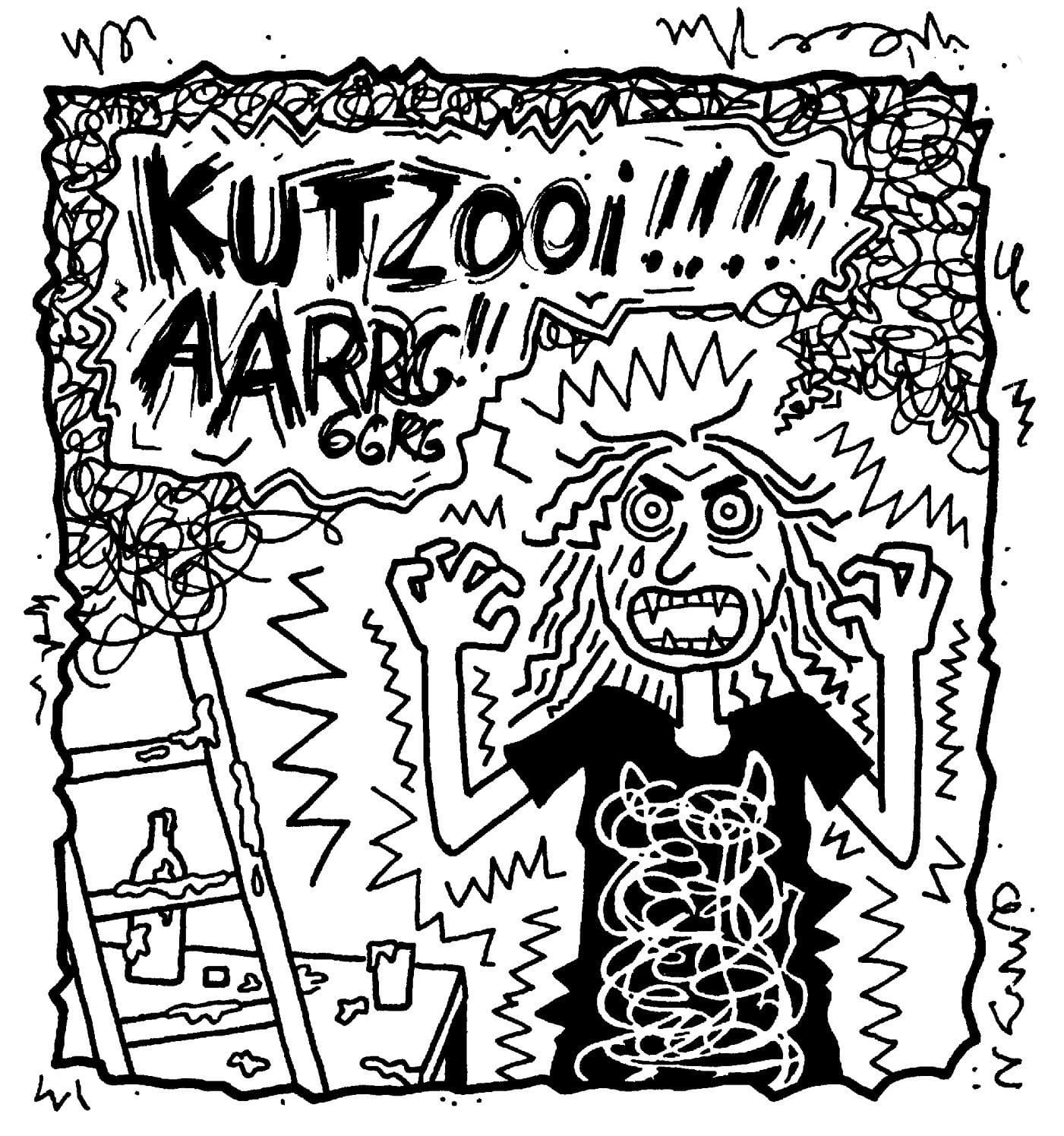 Drawing from 'Long May She Live'
Drawing from 'Long May She Live'© Barbara Stok
Graphically, Barbaraal is made up of black and white drawings with rather thick black contour lines. Just like the story structure, Stok’s drawing skills also improve with each issue. The series fits nicely into the international small press DIY aesthetics and the alternative (grunge) culture of the 1990s, but then Dutch style. Letter writer Joe Matt may love the production values more than the subjects, but her readers fall for the spontaneity and openness of Stok’s comics. Barbaraal 3 is already being printed in a first run of a thousand copies. For that type of comic, that is a considerable success, especially for a self-published edition.
What success could such a bright comic about youth culture not have on social media twenty-five years later? Barbaraal is actually an ideal Instagram comic, partly because of the focus on recognisability and authenticity.
Outstretched hand
After the third issue of Barbaraal, Stok is taken on by the Dutch publishing house of Nijgh & Van Ditmar, who have since continued to publish her faithfully as the only permanent comic book author on their list. They collect the first three issues of Barbaraal in novel format as Barbaraal tot op het bot (Barbaraal to the Core, 1998) and publish a fourth and final comic Sex, drugs en strips (Sex, Drugs and Comic Strips, 2000).
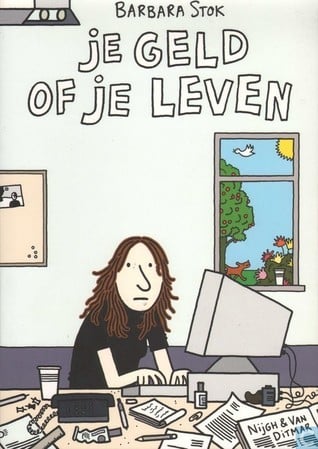 Cover of 'Your Money or Your Life'
Cover of 'Your Money or Your Life'© Barbara Stok
In 2003 follows the chain of comic strips, Je geld of je leven (Your Money or Your Life) Stok’s first book-length story. In increasingly sober and uniformed black and white, she reminisces about an episode from her professional life from the period before she re-trained herself as a comic book author. She worked for a while as a photographer for a regional newspaper but became so caught up in an ever-increasing work rate that she asked to be allowed to work part-time. When that was scaled back after a trial period and she had to work full-time again, it made her unhappy and she resigned. Money could not compensate for the loss of time and energy and so she broke away from social expectations.
As is often the case in the first comics of her oeuvre, the story itself is not very spectacular. But Stok’s lucid account of the everyday makes her work recognisable to many readers. For the first time, Stok explicitly thematizes her need for an alternative, conscious interpretation of life in her comics. Your Money or Your Life is therefore a provisional answer to the question of the meaning of life that in previous comics was mainly given subdued expression. Like the Barbaraal comics, the book is an outstretched hand to the reader who recognize himself in her considerations.
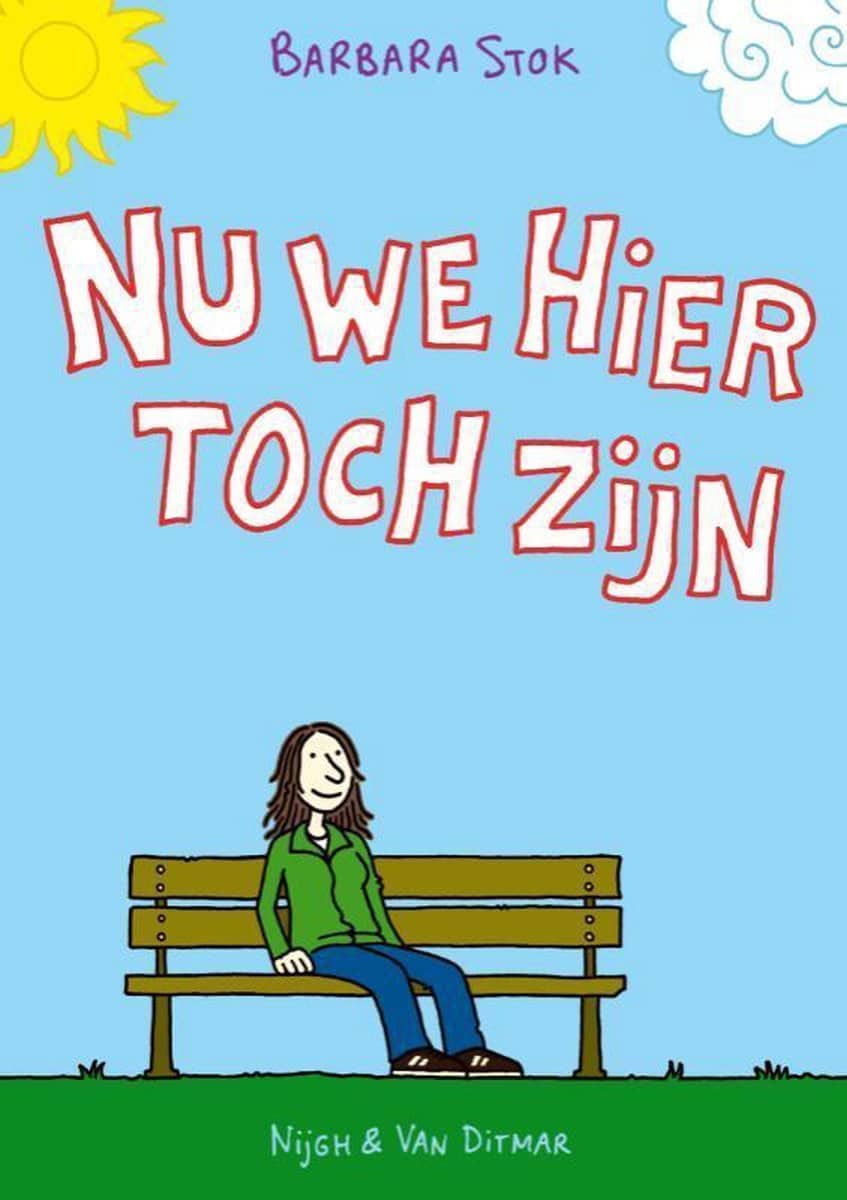 Cover of 'Now That We’re Here'
Cover of 'Now That We’re Here'© Barbara Stok
As Stok finds more stability in her private life, the subjects of her short comics also change. The collection Barbara weet het beter (Barbara Knows Better, 2006) is another one of often ironic advice on life like in the early Barbaraals,
which she makes on behalf of a newspaper. In the collection Nu we hier toch zijn (Now That We’re Here, 2005) the transition to another life is palpable. Café visits become boring now and then, doubts about job offers and about her choice to become a full-time comic book author indicate that Stok’s authorship also causes stress. Sex with her partner Ricky, with whom she plays in the band De straaljagers
(The Jet Fighters), confirms that her life is good and occasionally provides comic relief.
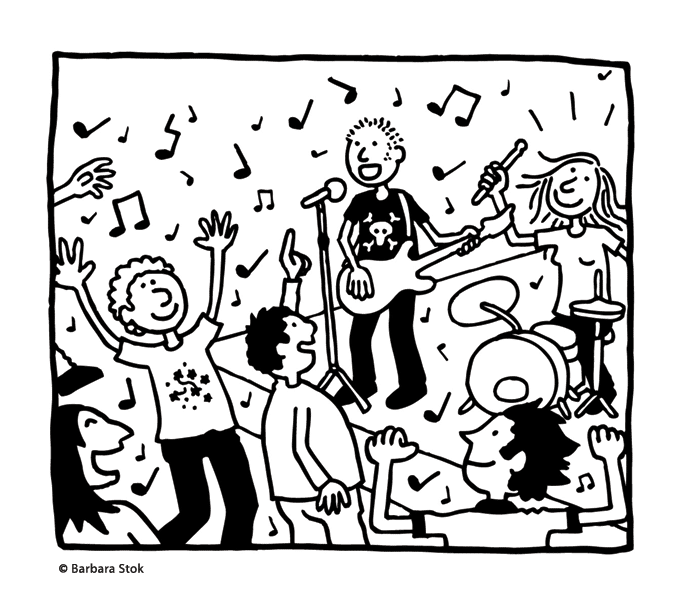 Drawing from 'On Tour to Spain and Other Stories'
Drawing from 'On Tour to Spain and Other Stories'© Barbara Stok
Towards the end of the decade, the tone becomes clearly less carefree. Rock and sex still provide light-heartedness, but in Op tour door Spanje en andere verhalen (On Tour to Spain and Other Stories, 2007) and Dan maak je maar zin (Just Get in the Mood Then, 2009) Stok must deal with some hard setbacks. Along with Ricky, she must accept that they cannot have children despite frantic efforts, and Ricky’s brother also dies suddenly.
Like many events in her life, Stok also processes these into narrative comics. But because every life has its own specific fits and starts, the recognisability that her comics used to aim for is partly lost here. As a reader, you see the couple on a trip in Japan, on tour in Spain, struggling with that death and that unfulfilled desire to have children. Stok’s stories are shaped by the unpredictable twists and turns of life as updates from an ex-girlfriend you still care about. She does not express the lives and opinions of an entire subculture or generation as much as in her early comics.
Even though she still gives form to the setbacks in her life in the same way as those lighter stories, their impact in these comics also heralds a new phase in her oeuvre.
Cynics and Stoics
In early comics, Stok’s interest in a search for meaning was already occasionally present. This was evident in a conversation with TV makers on a religious broadcasting channel or in her curiosity about Buddhism and meditation. In her work from Dan maak je maar zin (Just Get in the Mood Then) onward she investigates what classical philosophers, and especially the cynics and stoics, can mean for her life. The first result is Over de levensgenieter die haar angst voor de dood wil verdrijven (On the Bon Vivant Who Wants to Drive Away Her Fear of Death, 2010), her most radical change of course since her switch from her self-publishing to Nijgh & van Ditmar.
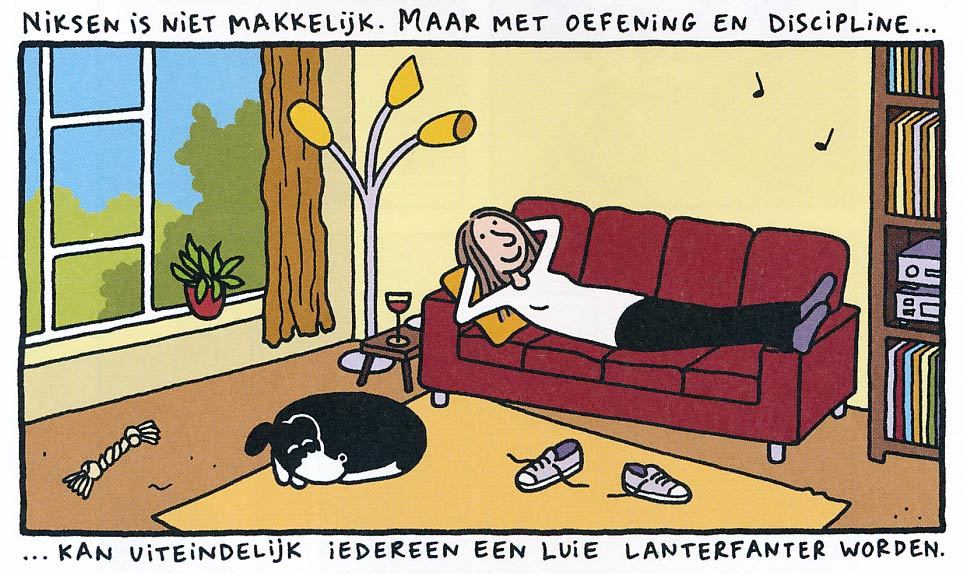 Drawing from 'Just Get in the Mood Then'
Drawing from 'Just Get in the Mood Then'© Barbara Stok
Over de levensgenieter (On the Bon Vivant) is printed entirely in colour, has a hard cover and a landscape format, like a picture book. It is her first book that explicitly draws attention to the graphic style. The simplicity of that has always been a perfect vehicle for attracting non-comic readers into the stories. Here Stok’s lines are more sketchy, sometimes unfinished. She alternates graphic scenes with diary excerpts and quotes from well-known philosophers, that are intended to help avert her fear of death.
Even though Over de levensgenieter is an uneven experiment, the colouring, text fragments and philosophy will remain present in the books to come. By chance, her work will suddenly also seek out content-related horizons other than those of her own life.
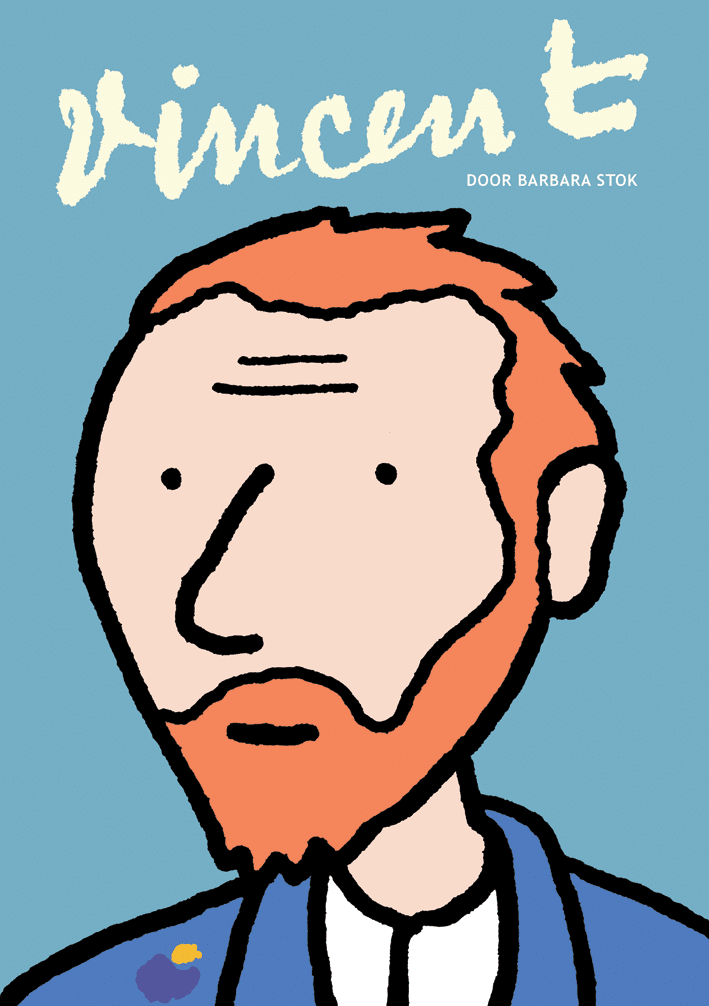 Cover of 'Vincent'
Cover of 'Vincent'© Barbara Stok
As part of a larger project to give Dutch comics more visibility, Stok starts to work on a biography of Vincent van Gogh. Vincent (2012) will be her first work in which she is not her own main character. Stok’s comic stands out in comparison with the many artist biographies in comic book form that appeared in those years. Her fellow biographers often opt for visual nods to well-known paintings and lack a clear angle, as if they want to make a comic strip out of a Wikipedia page. Stok’s Vincent is more of an attempt to understand the man better rather than writing a bona fide painter’s biography. She indicates in interviews that she did not feel much affinity toward his paintings beforehand. It was the correspondence with brother Theo that really made her interested in Vincent. His attitude to life, his relationship to art and to the world around him touches her.
Of course, she recalls the legendary events in Arles and shows how well-known paintings originated, but the emphasis on the letters makes this work commissioned by the Van Gogh Museum an original comic strip. Vincent marks Stok’s international breakthrough. The book is translated worldwide, and she travels for years to comic strip festivals and literary events abroad to promote it.
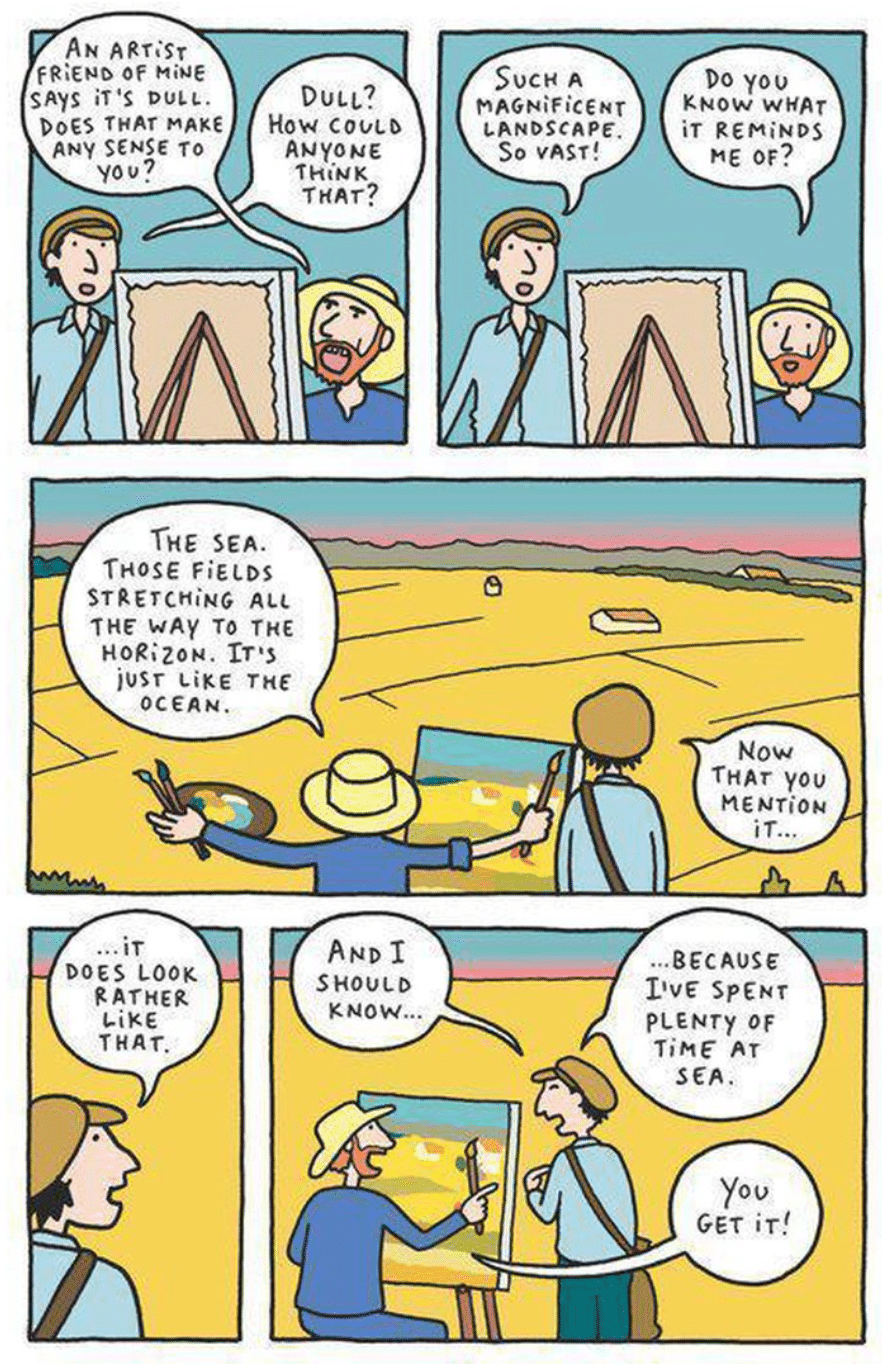 Drawings from 'Vincent'
Drawings from 'Vincent'© Barbara Stok
Artist biographies and work commissioned by museums become new strings on Stok’s bow. The small hardcover booklet De omslag. HN Werkman wordt kunstenaar (The Cover. HN Werkman becomes an artist, 2015) is commissioned by the Groninger Museum and tells how the Groningen printer H.N. Werkman retrains himself as a graphic artist after the bankruptcy of his business at the beginning of the twentieth century, echoing her own similar choice in her book Je geld of je leven (Your Money or Your Life).
The commissioned biographies do not prevent Stok from continuing to draw comics about her own life. Toch een geluk (A Blessing After All, 2016) takes stock after Vincent. The reader can not only follow the working process that went into producing the immensely popular book, but that also included nods to scenes from Vincent. The international attention also appears to be greatly demanding on Stok. So, she consciously slows down and seeks refuge in the tranquillity of Epicurus, nature, sailing, her partner Ricky, and their dog.
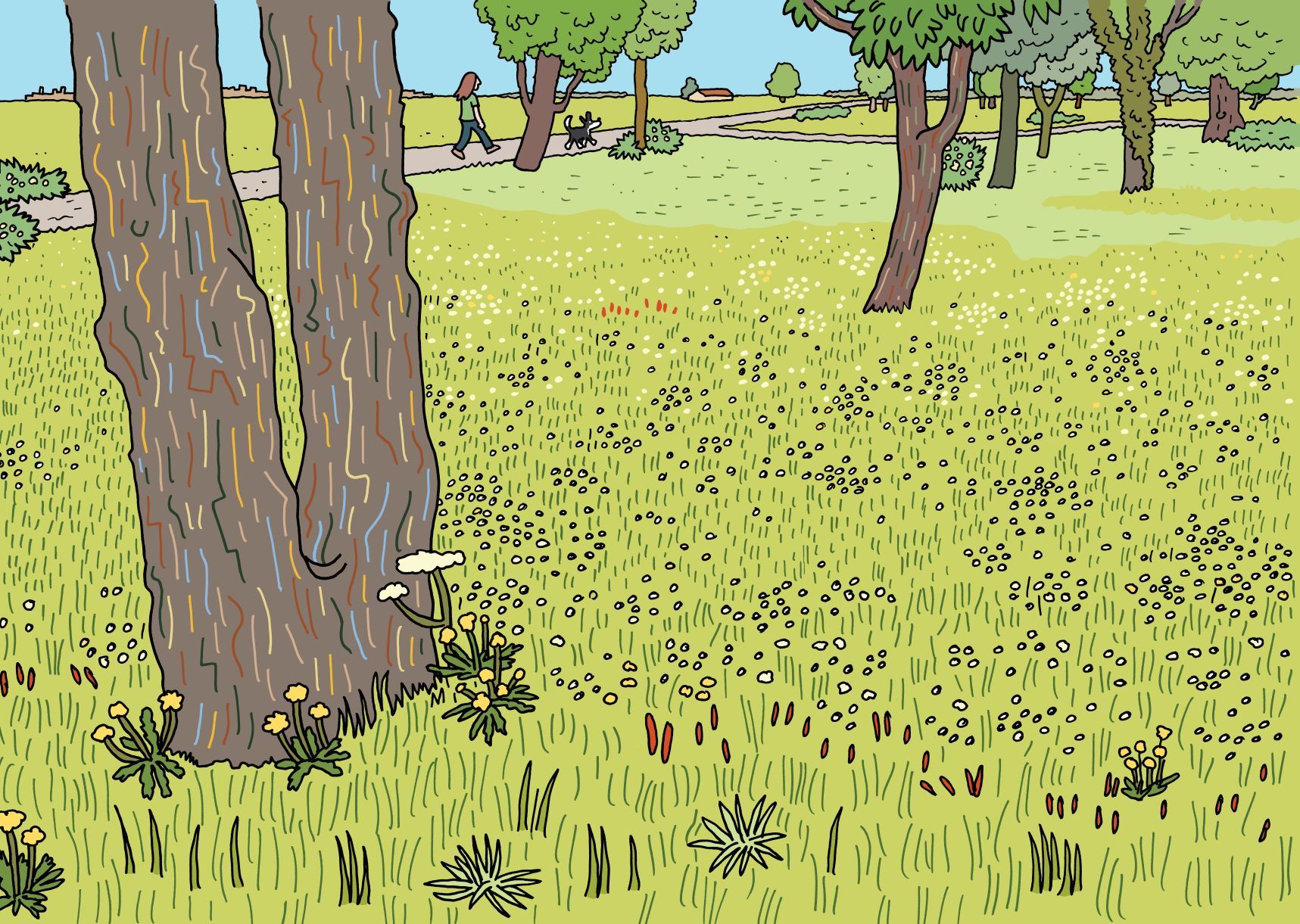 Drawing from 'A Blessing After All'
Drawing from 'A Blessing After All'© Barbara stok
Historical role model
 Cover of 'The Philosopher, the Dog and the Wedding'
Cover of 'The Philosopher, the Dog and the Wedding'© Barbara Stok
Her abiding interest in philosophy and her experience in biographies almost naturally lead to the next step in Stok’s oeuvre: De filosoof, de hond en de bruiloft (The Philosopher, the Dog, and the Wedding, 2021), a biography of one of the oldest known female philosophers, Hipparchia of Maroneia. This time it is not a commissioned comic, but a portrait of someone who fascinates Stok. Hipparchia belonged to the Cynics, the forerunners of the Stoics. She was born in the fourth century BC into a wealthy merchant family but left her luxurious life to marry the scruffy philosopher Crates of Thebes.
In Hipparchia, Stok sees a historical role model of a woman who abandoned the expectations of society at the time and went in search of her personal happiness. Her version of the life story of Hipparchia, which she fills in based on the few data that have survived, shows a woman who questions the obvious things of the time and prefers a beggar’s life to the material concerns that come with wealth.
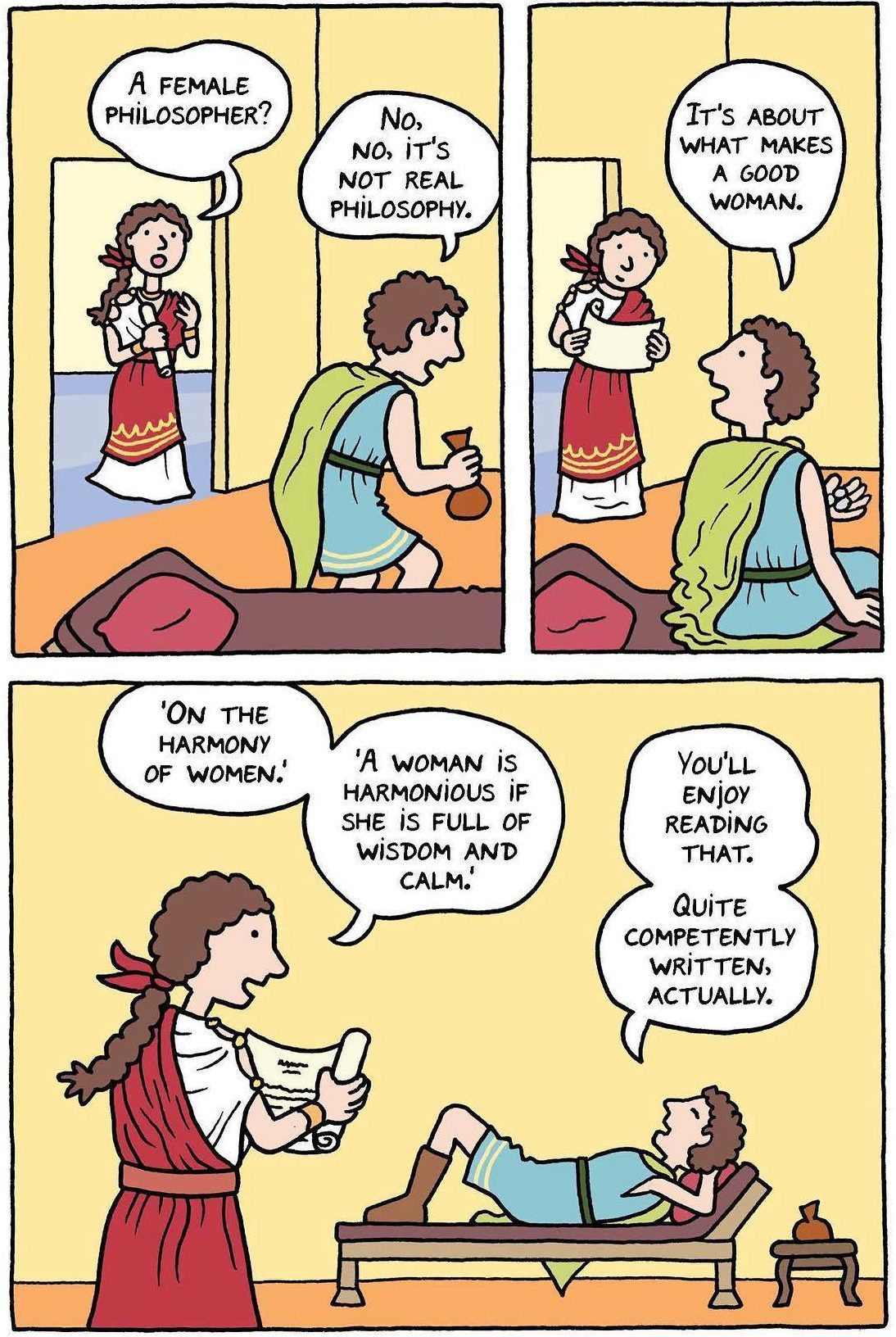 Drawing from 'The Philosopher, the Dog, and the Wedding'
Drawing from 'The Philosopher, the Dog, and the Wedding'© Barbara Stok
It’s not hard to understand why Hipparchia’s life inspires Stok. At the same time, the parallels are also possible pitfalls. Stok’s solid documentation does not necessarily keep her from viewing the life of Hipparchia from a too contemporary perspective. A very twenty-first century reading of the past lurks in the wings, for example when it comes to women’s or animal rights. At times, both story and drawing or colouring can seem a bit too simple, but The Philosopher, the Dog and the Wedding is certainly Stok’s most ambitious project to date, a high point in a development that began with the accounts of her booze drenched nights in the Vera in Groningen.
Over the quarter of a century of her career, she has built up a consistent body of work that follows the development of her personality. Like Hipparchia, Barbara Stok has chosen a path that was not paved for her, but one she built herself.


